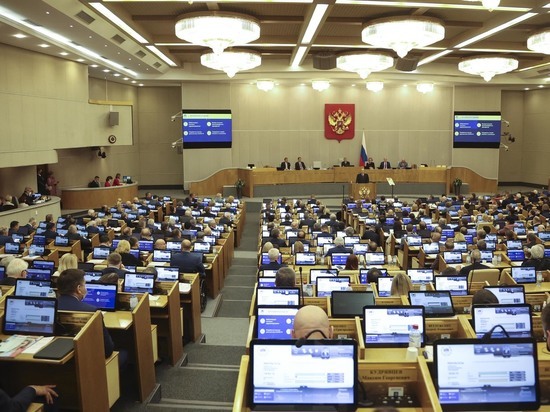Experts believe that this year the Duma campaign is influenced by previously unheard of factors
The Expert Institute for Social Research (EISS) organized a round table with sociologists and political scientists “In the goal.” alignment in the future State Duma “. This time, due to the close end of the election campaign, the organizers of the meeting invited the maximum number of sociologists to the discussion. And they, in addition to the current evaluations, also provided predictions of the voting results, although they provided them with serious reservations.

Photo: Natalia Gubernatorova
The main caveat was that no confident predictions could be made in the current elections, as none of the methods used could take into account all the factors that could seriously affect the outcome. So, if we can talk confidently in general about the places that its participants will take in the election race, then about the fundamental details, such as whether the winner in the State Duma will win a constitutional or simple majority, and whether the most successful of the newcomers will be able to form their own faction. : we can only talk about some “corridors of opportunity”.
Speaking of these reservations, the head of the EISS expert board, Gleb Kuznetsov, pointed out the fact that he testifies to the fact that the Russian political space is alive and active processes are taking place in it. That is why it is difficult, unlike something dead, to make the finals – everything is completely predestined there.
Mikhail Mamonov, head of the political analysis practice at VTsIOM, was the first to present his data. This is what the parties' evaluation of September 9 looks like. In the first place is the “United Russia”, for which 29.4% of all respondents are ready to vote, or 35.3% of those who declare that they will definitely vote. Furthermore, the Communist Party – similarly 16.5% and 20.5%, LDPR – 10% and 8.5%, SZZP – 5.5% and 6.9%, New People – 5.2% and 4.5%, Party of pensioners – 3.1% and 2.8%, and Yabloko – 2.1% and 2%. For all together, small parties this year expressed a willingness to vote for 19% of voters. And here is the VTsIOM forecast (average value between the corridor boundaries): “ER” 42%, KPRF – 19%, LDPR – 11%, “SRZP” – 8%, “New people” – 5%, “Pensioners' party” -4 %, “Yabloko” – 3%. Also REP “Green” can get 3%.
According to the FOM, introduced by its leading analyst Grigory Kertman, the situation is basically the same, but the results are slightly higher for United Russia, slightly lower for the Communist Party of the Russian Federation and significantly less for the Liberal Democratic Party. The Social Marketing Institute (Insomar) also presented its evaluation. Its director for political analysis, Viktor Poturemsky, also cited data that are not fundamentally different from VTsIOM, although INSOMAR had slightly lower figures for the Communist Party of the Russian Federation and the “Pensioners' Party” and “higher” for the SRZP. Insomarov's prediction also turned out to be almost identical to the VTsIOM's prediction, except for the result of “United Russia” – it is higher than that of colleagues.
If the VTsIOM, FOM and INSOMAR assessments and forecasts covered only half of the Duma's mandates (ie the results for the federal district), the Center for Current Policy (CPC) has already presented a fully-fledged forecast for all State Duma posts, including those received by party representatives in single-member constituencies …. The head of the CTC Scientific Council Alexei Chesnakov, in anticipation of forecast data, mentioned circumstances that significantly complicate forecasts this year simply due to the fact that they were not previously associated with the Duma campaign. This, in addition to all the fluctuations in public opinion associated with coronavirus, also the new technical conditions for voting – “three days” and remote electronic voting.
The forecast from the CPC is as follows: “United Russia” can win from 292 to 306 seats, the Communist Party – from 67 to 70, LDRP – from 39 to 42, SRZP – from 25 to 28. Candidates who were nominated themselves, they can get 3-5 seats, Yabloko, possibly 2.
The prognosis for “participation” (now it can be “remote”), suggested by experts, was somewhat different. For example, for FOM it is from 43% and more (it can exceed 50%), for INSOMAR it is with certainty 50-52%.
Gleb Kuznetsov noted in his detailed review of the results and campaigns of rating leaders that the United Russia, unlike its competitors, was not only able to cope with the challenges of negative perceptions of pension reform or coronavirus decisions, but also convincingly updated active groups. At the same time, the same KPRF, which could play exactly what could harm United Russia, did not realize these opportunities, failed to convincingly offer something new, and, moreover, began to embarrassingly resist innovation in the electoral system. designed to ensure the safety of citizens. The Liberal Democratic Party of Russia is unlikely to grow compared to the previous results as a result of the implementation of the leader's agenda, which according to the expert is quite special. The “SRZP” will also not justify hopes for a clear take-off, judging by the campaign. A pleasant surprise, according to Gleb Kuznetsov, was the “New People” campaign, which is relatively literally technologically literate, and their candidates, interesting to the regions. The Yabloko campaign was described as unsuccessful because it represented nothing conspicuous, while the story of a departure from Grigory Yavlinsky's image did not lead to any comprehensible result.
* VTsIOM survey September 6 – 8, 4000 respondents aged 18 and over. The survey method is combined (telephone survey, apartment survey). For this sample, the maximum error size with a 95% probability does not exceed 2.5%.

